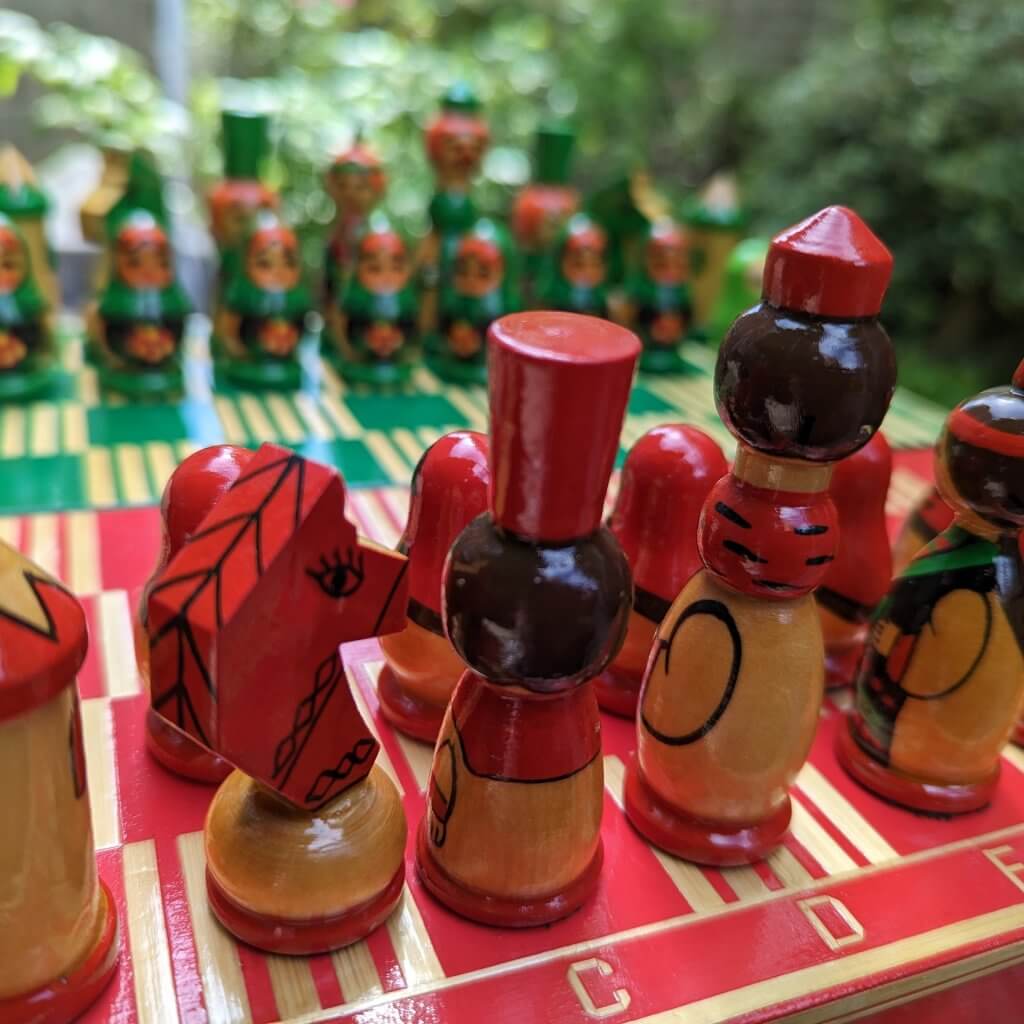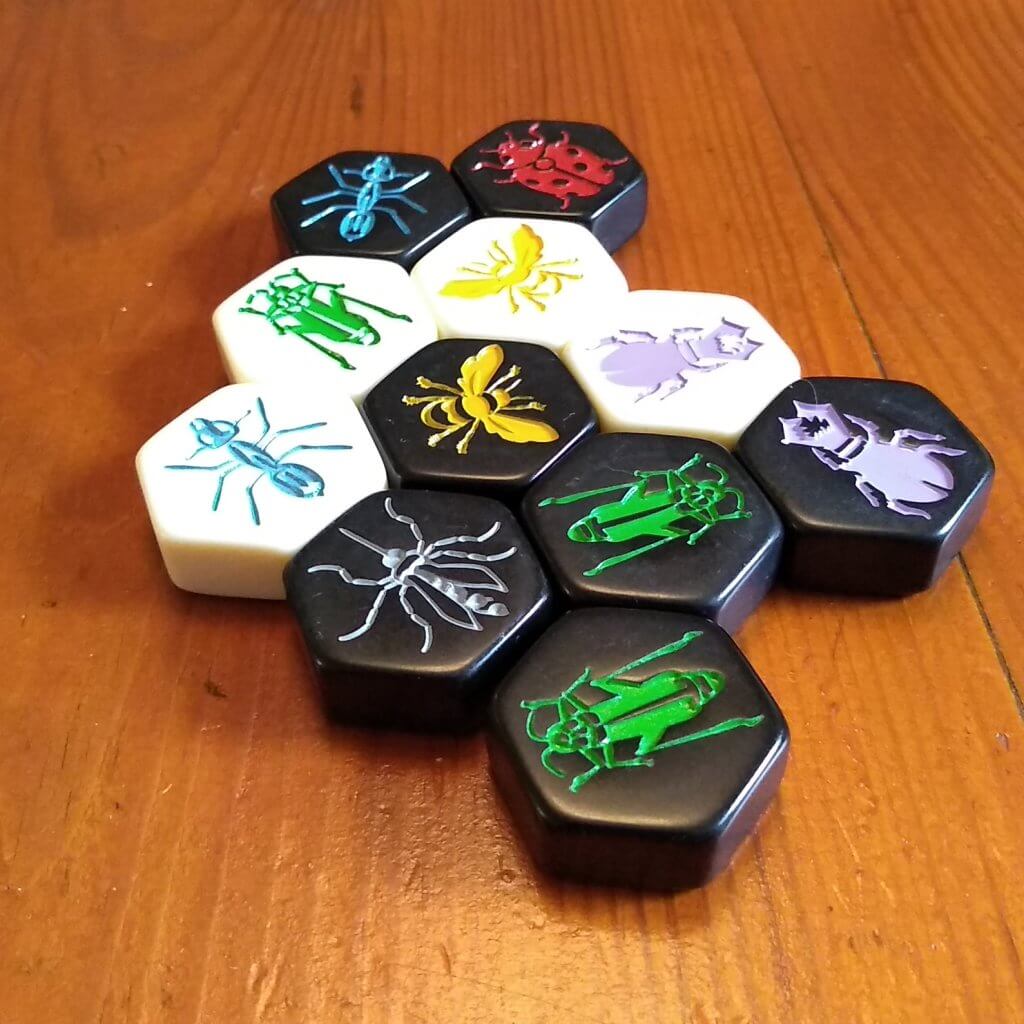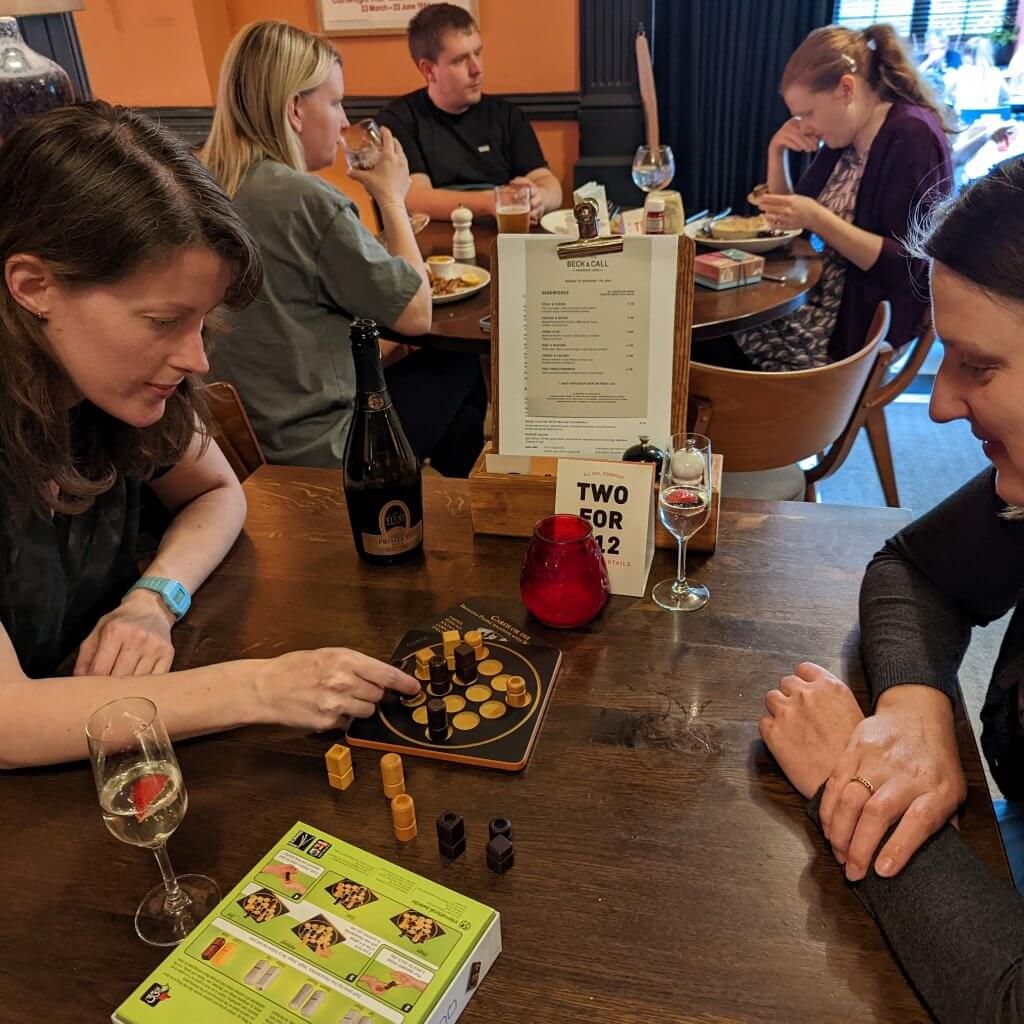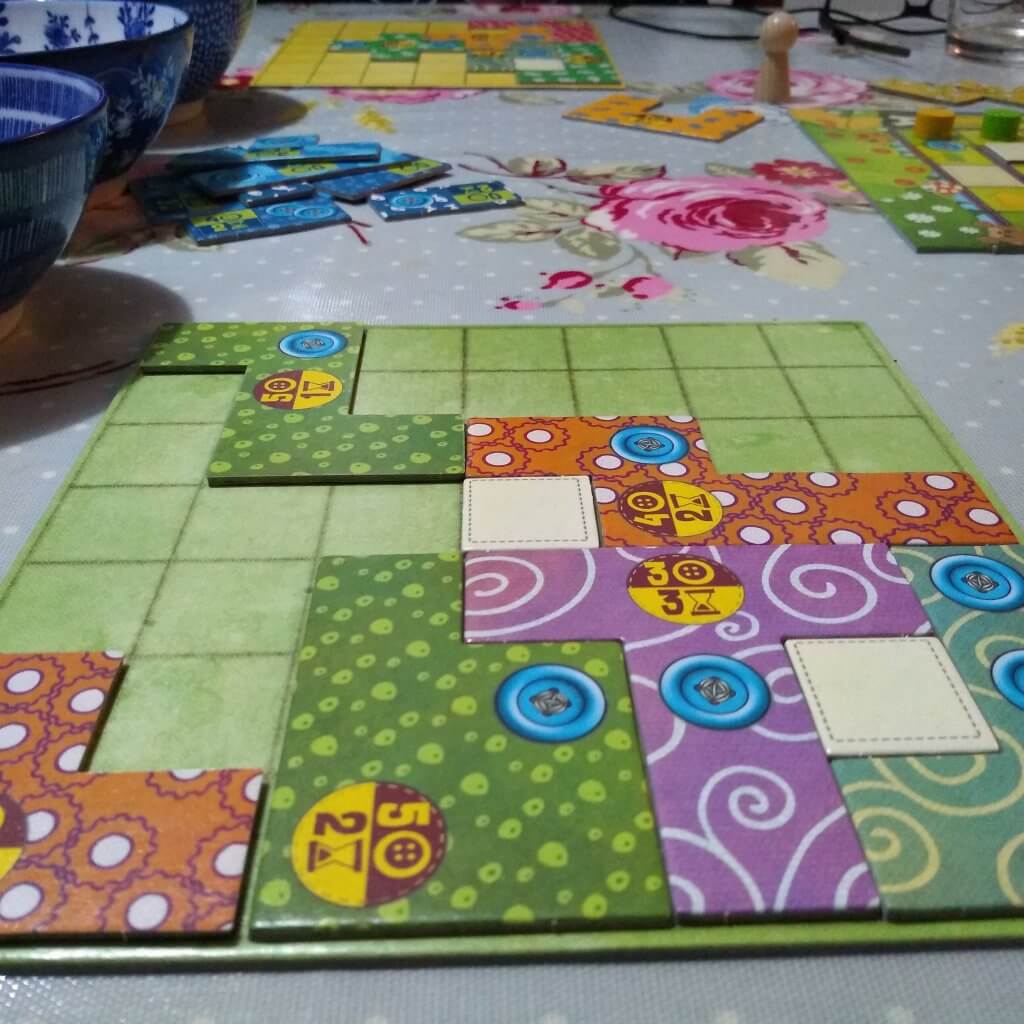
Obviously, by all means play Chess. Chess was fascinating even before the suggestion of using vibrating devices for clues. Chess sets are ubiquitous and the Queen’s Gambit TV series brought with it even more popularity with games stores having to order in extra sets in. The sets themselves can be things of beauty or whimsy. The one pictured above, I found in a charity shop and it’s just beautiful. There are sets for every interest and fandom – we also own a Star Wars set. But it’s not just aesthetically pleasing, it is the ultimate game of wits, tactics and strategy. It’s the game many people feel duty bound to pass on to their children or display proudly in their home. And while there are many variants of Chess itself, if you enjoy Chess or like the idea of it but really haven’t got time to deliberate over which piece to sacrifice next then these suggestions are for you…

- In Hive, like Chess, one of you plays black and one white; each piece moves uniquely and it is mastering the interaction of those abilities that will win you the game. Every decision you make in Hive counts and while each piece moves differently, a lot of the bugs move in an intuitive way. Your aim is to ensure the opponent’s Queen is surrounded by bugs (they don’t all have to be yours). It’s quick to play and fairly quick to learn (I kept a cheat sheet on hand to remind what each bug does which helped). It gorgeously chunky and tactile and has no board making it portable and great to play wherever you are.

- Quarto is more accessible than Chess but similarly strategic and tactical. It feels more akin to Connect 4 but is fiendishly difficult as you can connect 4 in 8 different ways. (Having said that I’ve played people who make Connect 4 fiendishly difficult!) As is a bit of a theme with my games it is pretty and tactile. Like a Chess set it could easily be left out on display and picked up for a quick game. In the picture you can see the small set but there is a larger one that is delightfully chunky. The real kicker with this one is that on your turn you select a piece for your opponent to place. That means that if you win, you get to hand your final victorious piece to the loser and they have to place it in the winning position. Perfect if you’re ‘quite’ competitive.

- Patchwork is very different from my last two recommendations. There is some degree of randomness here in that the layout of the patches differs each time and what you can afford from your choices is going to be limited. However, I don’t think that detracts from the intelligence of the game. You can still be strategic but will have to rely much more on tactical decisions and perhaps the ability to adapt your strategy. I would argue that, that is just as challenging. Also, this is a spatial puzzle and less fiercely competitive than the other games. You will still need to gauge what your opponent will do to determine what you should do but going for screwing them over can easily backfire, leaving you with patches you don’t really want. Here you are trying to maximise your buttons (end score) by tessellating shapes and filling your board. Empty spaces carry a penalty. By now you can probably see a theme in my recommendations. They are similar not only in brain power but are all tactile and nice to look at. In patchwork you earn buttons to spend on more patches and to count as victory points at the end. Obviously I have replaced the cardboard tokens with real buttons – ah but were they fabric covered buttons? Why yes of course. There are lots of other brilliant two player strategy games like Abalone, Quixo, Quoridor, Qawale, Connect 4 as well as Chess of course. Come along to an event and try them out.
